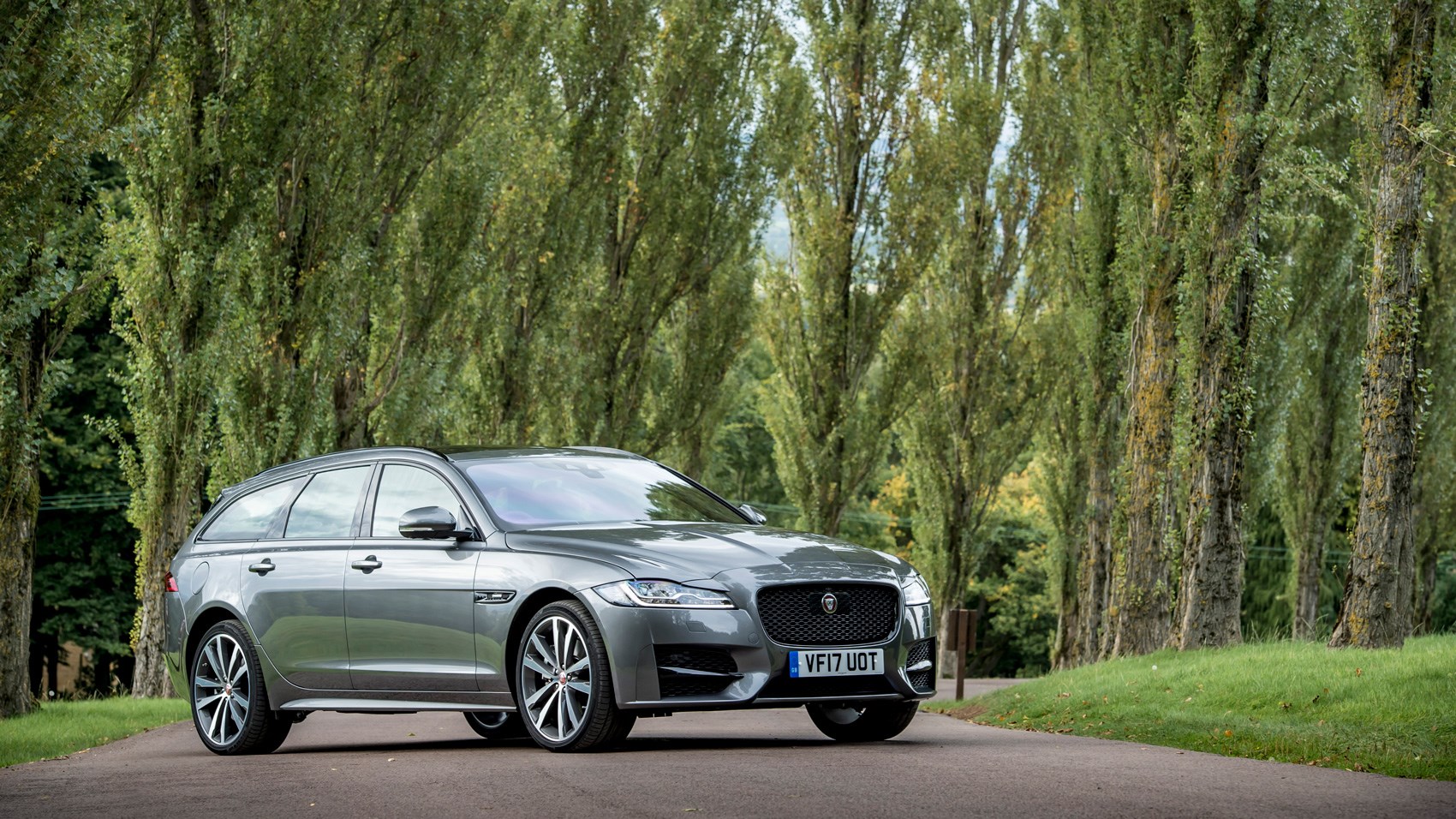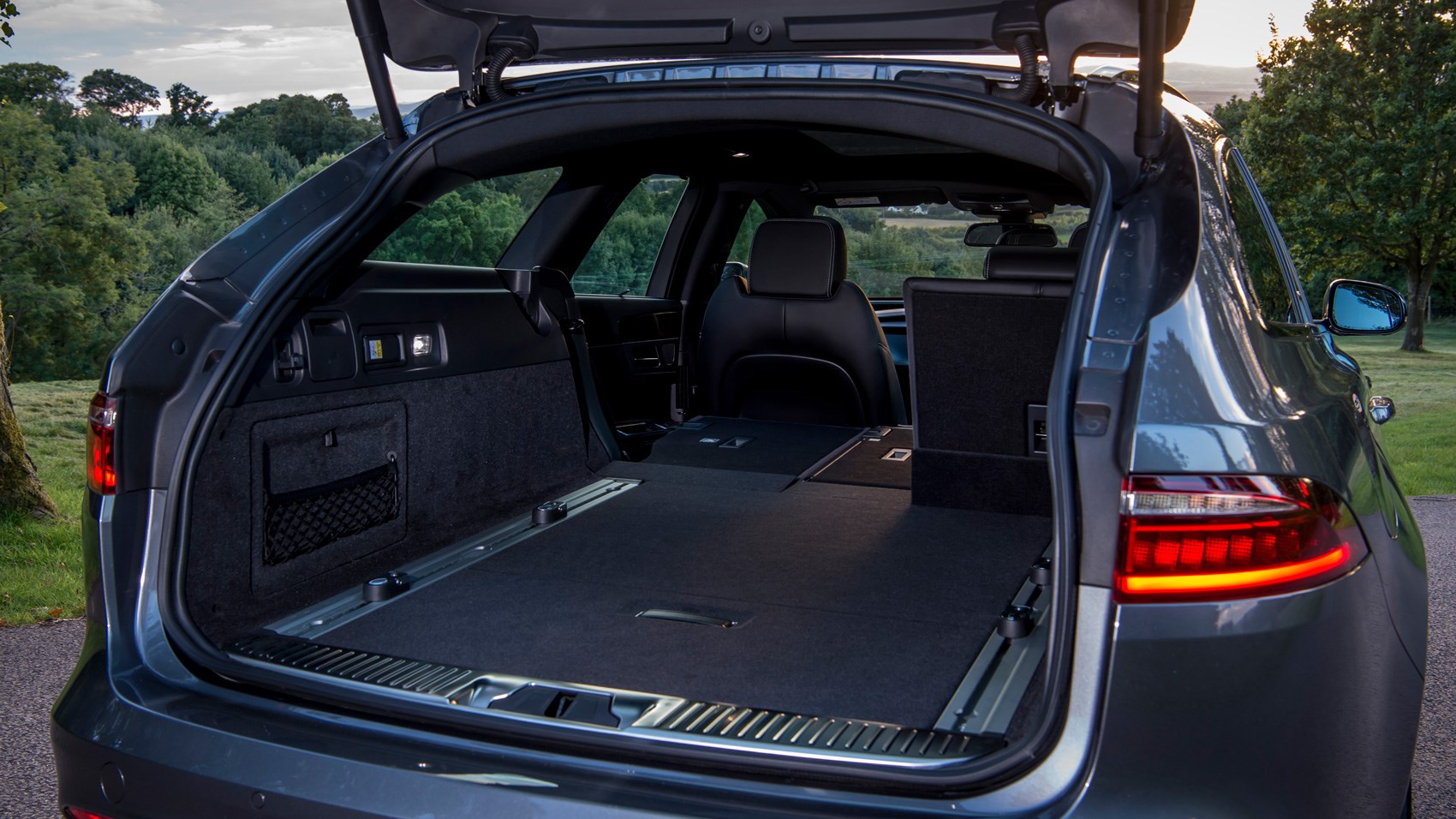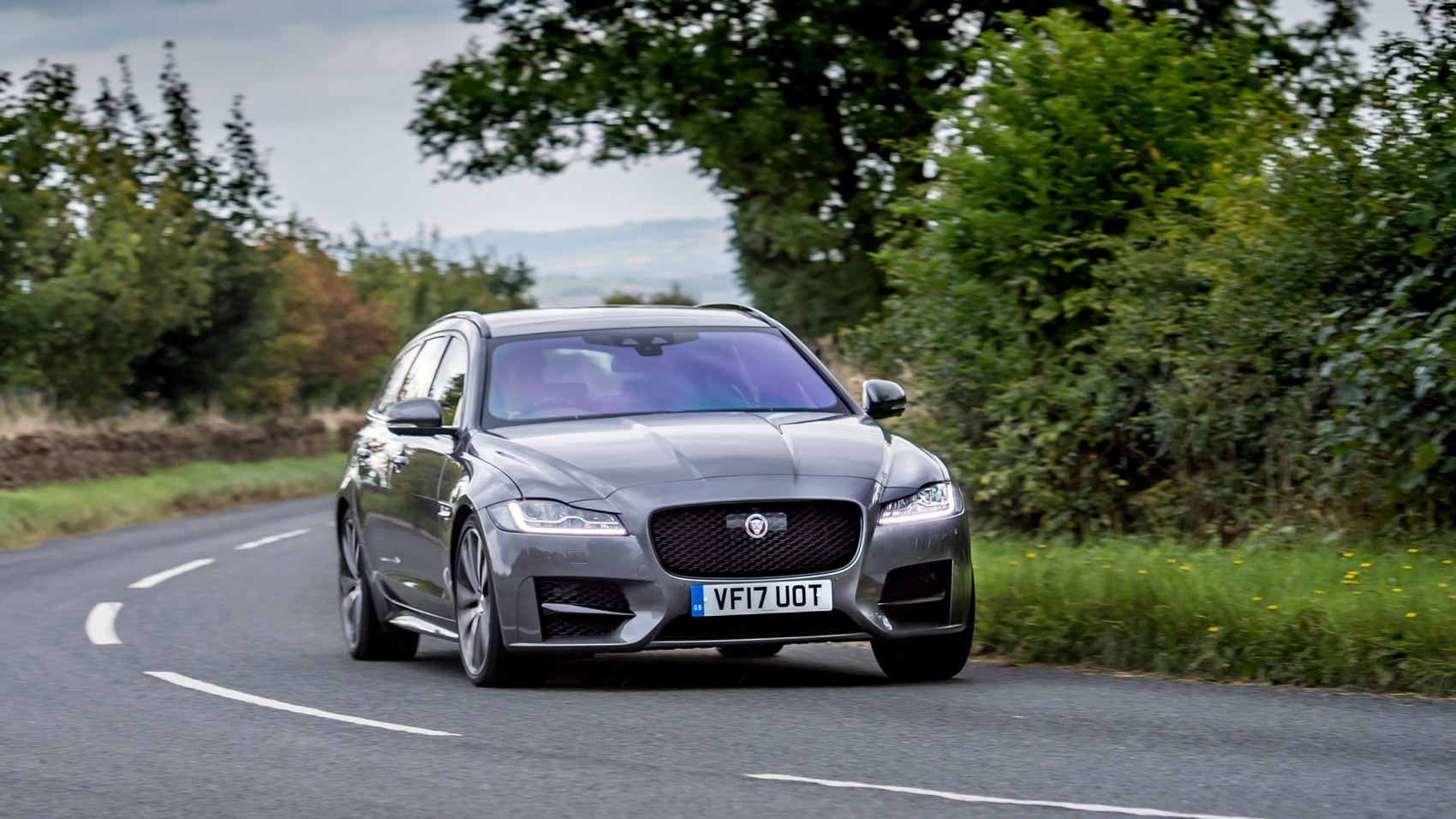► Jaguar XF Sportbrake review
► Our car was an R-Sport AWD
► UK prices from £34,910
Few estate cars pulled off cool quite as successfully as the original Jaguar XF Sportbrake – a fantastic-looking wagon whether fitted with a mad V8 or a roof-load of Team Sky racing bikes.
The name helped with the lifestyle image, of course. This is a car to take a break from sports in, not to fill up with flat-packs and garden waste like a normal estate.
As such the second-generation car has been designed to appeal to Jaguar’s wetsuit-wearing customers, not those sporting the three-piece variety. That means you now get the taillights from an F-Pace, so it doesn’t look like the business saloon anymore, and a clever waterproof activity key that you can take kayaking or whatever.
Jaguar Activity Key: commended for a Parkers tech award
I want an SUV though…
In some ways the Jaguar XF Sportbrake is a slightly odd car to launch now – the estate made sense in 2012 when it was the only big-booted Jag hatchback, but those sales have been thoroughly cannibalised by crossovers and SUVs now.

So why bother? Well for a start, the styling is still a big draw. The XF wagon is elegantly athletic with a tapering roofline lengthened by an extended rear spoiler. It looks mega from all angles, especially from the rear thanks to its proper, shin-burner exhaust pipes. No fake-plastic finishers here.
It’s the same length as the saloon despite looking longer and sleeker, and actually measures up shorter and lower than the old car.
Does that mean Jaguar XF Sportbrake practicality has been compromised?
No, despite the new dimensions, this version packs a bigger boot with 565 litres on offer. That’s enough for two golf bags and buggies, says Jaguar, while 1700 litres is available by collapsing the rear seats using handles in the boot.
The boot is completely square with no intrusions and flat due to redesigned rear seats, plus there’s no lip to lift objects over and an electronic tailgate that can be operated hands-free.

The only complaint from us is the fact the boot floor tilts uphill as you look at it thanks to a strengthening beam beneath, and the internal location of the AdBlue filler cap. Be careful not to spill any AdBlue on your possessions, because it stinks.
Rear passenger space is also massive even if you tick the panoramic sunroof option, and some of the cabin materials are outclassed by German rivals, but you do get Jaguar’s vastly improved infotainment system.
Does the XF estate drive like a Jaguar should?
Absolutely – and this is surely the biggest advantage it has over an F-Pace, which drives very well for an SUV, but really isn’t a patch on this wagon.
Engine choice is limited to a single 3.0-litre diesel V6 and then a selection of four-cylinder, 2.0-litre units, including a 247bhp petrol and three diesel options – 161bhp, 178bhp, and the version we’ve got with 237bhp.
It’s the pick of the bunch, with all-wheel drive and an eight-speed auto box as standard, and Jag reckons it’ll be the biggest seller. There isn’t a huge spread of torque, but the eight-speed automatic gearbox manages it well and as a result it’s an easy thing to live with.

As far as handling goes, the XF Sportbrake inspires confidence – it was engineered to drive like the saloon, despite being 115kg heavier, so you get tweaked front suspension and air springs at the rear.
It’s stiffer but less floaty than a BMW 5-Series Touring and more composed than a Mercedes-Benz E-Class, delivering a comfortable and rewarding drive on all but the most unsettling surfaces.
Verdict
Look at it this way – if James Bond and M decided to patch up their working relationship with some fly-fishing in Scotland, the Jaguar XF Sportbrake is the car they would take.
It’s stylish, practical, desirable, and fantastic to drive. What more do you need to know?
Check out the rest of our Jaguar reviews